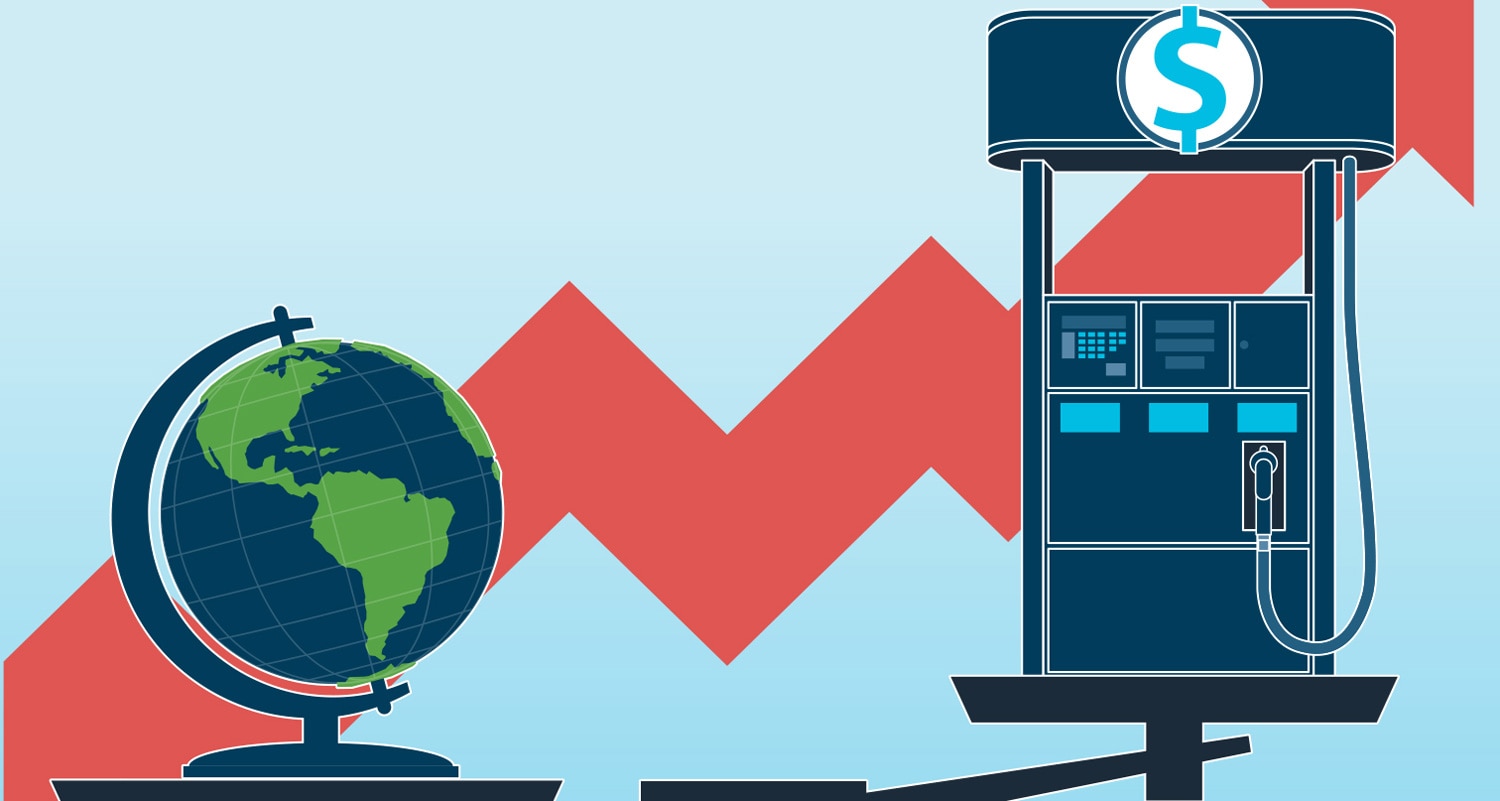Why Are Gas Prices So High?
Several factors conspire to make gas prices erratic.
 Capital One
Capital One
Gasoline is one of the most price-volatile products that Americans regularly purchase. To give you an idea of just how unstable it is, let’s look at another common consumer product: milk. From 1995 to 2021, the average inflation-adjusted price for a gallon of milk gradually dropped from $4.23 to $3.55, and only on three occasions did the cost shift by more than $0.10 in a given year. In comparison, the price of a gallon of regular gasoline increased by $0.75 in the span of just two weeks after Russia’s invasion of Ukraine in late February 2022. Before that, the price had more than doubled since the most recent low point, in April 2020, when it cost $1.74.
Issue of Supply and Demand
At its core, this is a simple supply-and-demand problem. In 2020, demand for gas was at a pandemic-induced low, as governments around the world restricted travel and closed businesses. At the same time, supply was high because Saudi Arabia and Russia — which together account for 23% global crude oil production — were engaged in a price war after failing to reach their usual agreement on planned oil production levels.
Now those dynamics have reversed. All over the world, people are resuming something approaching pre-pandemic routines, but the supply of oil is low. Moreover, Russia’s invasion of Ukraine prompted President Biden to ban the import of Russian oil, and the Organization of the Petroleum Exporting Countries (OPEC) initially declined to increase production to fill the gap.
Why Does the Price of Gas Rise As Soon as Oil Prices Climb?
Gasoline is refined from oil, so it makes sense that when oil prices rise, gas prices will too. The numbers you see quoted in the news are typically referred to as oil futures prices. These represent contracts to buy oil at that price at a later date (often a month in the future but sometimes much longer). Analysts usually expect pump prices to trail oil prices by roughly three weeks, as the oil has to be shipped to a refinery, refined into gasoline, and then shipped again to stations before it finds its way to your fuel tank. But at both the pandemic low and Ukraine-crisis high, gas and oil prices moved almost in tandem.
It may feel like price gouging — which, in most states, constitutes a deceptive trade practice during emergencies and natural disasters, and violators can face civil or even criminal penalties — but station owners claim it’s not. Gas stations pay for fuel before you do, so by the time you’re filling up your tank, the station owner is already worried about the cost of the next shipment. Gas stations may have only a few days’ worth of fuel in storage at any given time, and hiking prices early is one way to raise the money they’ll need to pay for the more expensive fuel when it finally shows up.
The massive billboards that stations use to advertise their fuel prices make it easy for station managers to keep tabs on the local competition and for customers to do immediate price comparisons. If one station lowers its prices, others in the area are likely to follow suit to avoid losing business. If one business raises prices, others may be emboldened to do the same. It’s illegal for gas stations or oil companies to collude to fix fuel prices, but the billboards achieve a similar effect.
The factors behind the most recent surge in oil and gas prices are thorny and not likely to be quickly resolved. The U.S. and Europe are searching for ways to replace Russian oil, but there’s not much slack in the global market, and ramping up production from new wells will take months or years. Even if global supply keeps up with demand, gas prices tend to fall much more slowly than they rise. That’s just good business.
Written by humans.
Edited by humans.
 Annie White
Annie WhiteAfter earning a degree in political science from Boston University in 2012, Annie White wisely chose to put those skills aside to pursue a career writing about cars. Since then, she has driven and reviewed hundreds of vehicles representing the full spectrum of the market and has also written about automotive technology and business trends. Her dream car is a Geo Tracker.
Related articles
View more related articles